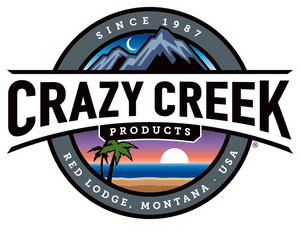- Z


Blister Prevention
Blisters can be a pain, both literally and figuratively. If untreated, blisters can worsen in size and discomfort, and even become infected. Fortunately, this is an issue you can prevent or minimize on the trail if you follow the right precautions and pack a few essentials. Read below for our tips!
Try, Train & Trust
The most common cause of blisters is usually ill-fitting shoes. It is crucial that you pick shoes that you have had experience hiking in and feel confident they will support your feet through the hike. For those looking for new shoes, we recommend extra space in the toe box to accommodate feet slipping forward, marginal room to allow for swelling, and a secure ankle to avoid internal slipping. Although it may be exciting to put new shoes straight to the test during Oxfam, make sure you have trained thoroughly in them by gradually increasing distances and walking in various environments.
Moisture is the enemy, as it is often the key factor for causing blisters. If you have the space, you may want to bring a second pair of shoes, such as sandals or light trainers, in case you experience heavy rain or need to do a river crossing.
Sock Neglection
Socks can, and do, play an important role in having happy feet during your hike. Apart from pure comfort, quality socks have the added benefit of wicking moisture and offering improved breathability to help reduce the likelihood of forming blisters. With a vast selection of socks to choose from, we recommend something primarily made of merino wool or high-quality synthetic material. Try to avoid cotton or bamboo, as these materials will retain moisture and dry slowly. Some socks provide additional padding and have an anatomical foot shape which can be beneficial but be sure to buy and test one pair before overhauling your sock collection.
If hiking for multiple days or through potential wet weather, we recommend bringing a second pair of socks to swap into, so any saturated socks don’t increase friction leading to blisters. You may also want to consider pairing a sock liner with a heavy/technical sock over it to mitigate any friction.


Tape it or Balm it
If you have had issues with blisters in the past and recognise that you are prone to developing them, it may be wise to utilise blister tapes and balms. When you’re hiking and start to feel like a blister is developing from the friction (aka a hot spot), apply blister tape to provide a physical barrier from the friction. Whereas blister tape provides a physical barrier, you could try a blister balm that alleviates friction by acting as a lubricant.
Hikers’ Wool
Another favourite is hikers’ wool, made of soft Australian sheep wool rich in a natural moisturiser called lanolin. When you start feeling a hotspot, place some hikers’ wool between your skin and your sock. The wool will start to integrate into the sock fibres providing soft and comfortable padding for your feet.
Firm Lacing
Lacing is often overlooked as a culprit for blisters but can indeed cause them to develop. It is important to have firm lacing, especially around the ankles. This will keep your foot snug and held into position, so any additional friction is mitigated. Don’t forget to re-tighten them, as they may loosen throughout the day. You may also want to experiment with various lacing techniques that may help alleviate pressure in certain blister-prone areas.
Conclusion
We recommend these preventative and on-the-trail strategies to eliminate or reduce the number of blisters forming on the trail. If blisters still persist to form, feel free to visit one of our Paddy Pallin stores with your hiking shoes so we can assess your footwear and provide some personal advice on how you may be able to address the problem.
Lifetime Club Membership
Join the Paddy Pallin Club for $10.00 and receive a 10% discount on all future purchases.*
Benefits
Exclusive Club Member sales, promotions, and events!
*Club Member discount not applicable to gift cards and services
such as repairs. Discount may not be used in conjuction with any offer




















































































































































